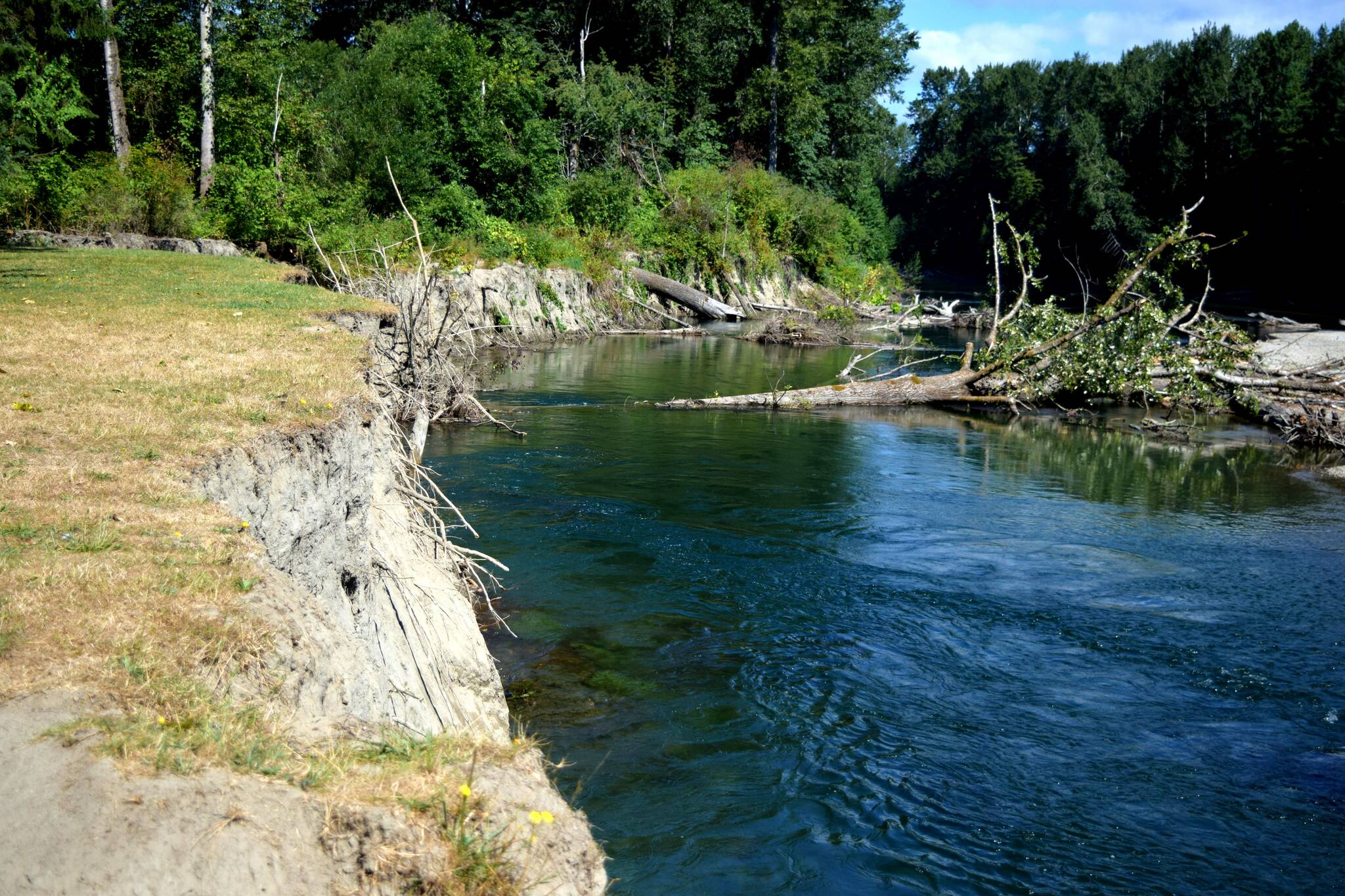The Snoqualmie Tribe has released a new plan analyzing the upper Snoqualmie River Corridor, which they hope will be the catalyst to addressing a longstanding lack of cohesive and strategic river management that has led to a decline in the ecosystem’s overall health.
The Upper Snoqualmie Resilient River Corridor Management Plan, released by the Tribe’s Environmental and Natural Resources Department this month, is a multi-year long project that combines community surveys, analysis of future climate change impacts and recommendations for future projects to improve river resiliency.
The plan is attempting to fill a current gap and be a stepping stone in uniting the river’s big three purveyors — Snoqualmie, North Bend and King County — to develop a cohesive and long-term river management strategy.
For decades, the plan notes, decisions on projects related to the river corridor were approved without a true long-term vision or management plan. As a result, many of those projects focused on slowing or halting the river’s natural processes to meet short-term needs.
That lack of planning has resulted in “the fragmented, disorganized landscape that one sees today,” where water quality and quantity as well as aquatic and terrestrial habitat, including downstream salmon runs have been harmed by disruptions to natural phenomena, according to the plan.
The constantly changing Snoqualmie River, its riparian ecosystem and surrounding forests are interconnected and together support a resilient river system. However, when they are disconnected, it harms the whole corridor.
Matt Baerwalde, an Environmental Policy Analyst with the Tribe and one of the plan’s lead authors, said you can think of it like a machine missing a single part – once one part goes, the whole system begins to decline.
Often, previous projects approved on the river, while not necessarily bad, were made without looking at work being done by neighboring jurisdictions, Baerwalde said.
“That can be a tenable management approach in the short term, but rivers don’t really work like that,” he said. “They’re a continuous system. Things that happen upstream and downstream in a river system will affect the other parts.”
Creating a resilient river ecosystem, he said, involves allowing those natural processes to restart.
Recognizing that need, the plan introduces a list of 22 actions that could be taken to promote river resilience and stewardship throughout the upper Valley. That list includes both small scale changes and multi-year, high-effort restorations.
The 22 proposals are grouped in four planning areas, including the Three Forks Confluence, Meadowbrook Slough, Kimball Creek, and City and Mill Pond. They also include corridor-wide projects, such as a forest stewardship management plan and conducting climate change, flood and erosion risk analyses.
As the plan notes, the river’s surrounding forest is unhealthy and needs a management plan to prevent further decline. It also highlights that floodplain connectivity is variable throughout the corridor and that river flows are expected to increase under climate change predictions.
“When we look at climate projections and run some of our own models and analysis, due to the expected effects of climate change, the peak flows are expected to increase,” Baerwalde said. “We expect to see the occasional really big floods get even higher and we expect to see more frequent high flows.”
Baerwalde said this plan is intended to reach residents with an easy to understand explanation of what is going on. He said they are hopeful that the plan can serve as a living document and conversation starter that will drum up support for investment in the river.
“One of the biggest takeaways from the project is how much potential there is in the upper Snoqualmie River Corridor for improving resilience,” he said. “There’s a lot that can be done and we recognize that big changes in this sort of landscape need the community to understand and believe in them.”
To learn more about the plan, visit: bit.ly/3bLtxMN.


